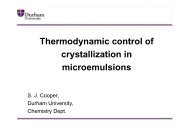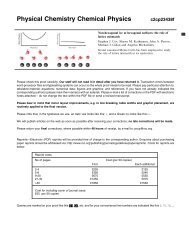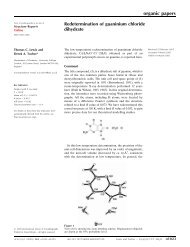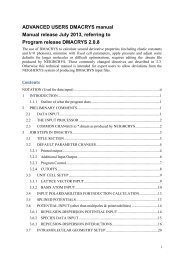An Introduction to the Theory of Crystalline Elemental Solids and ...
An Introduction to the Theory of Crystalline Elemental Solids and ...
An Introduction to the Theory of Crystalline Elemental Solids and ...
You also want an ePaper? Increase the reach of your titles
YUMPU automatically turns print PDFs into web optimized ePapers that Google loves.
28<br />
FIG. 12: Left: Bulk-truncated structure <strong>of</strong> <strong>the</strong> (001) surface <strong>of</strong> <strong>the</strong> diamond lattice. Right: <strong>the</strong><br />
(2 × 1) reconstruction <strong>of</strong> <strong>the</strong> (001) surface within <strong>the</strong> symmetric dimer model (SDM).<br />
FIG. 13: Left: Section <strong>of</strong> <strong>the</strong> DFT (LDA) surface b<strong>and</strong> structure <strong>of</strong> C, Si, <strong>and</strong> Ge (001)-(2 × 1).<br />
The circles <strong>and</strong> squares correspond <strong>to</strong> experimental pho<strong>to</strong>emission data. Right: Side views <strong>of</strong> <strong>the</strong><br />
optimized DFT (LDA) structures <strong>of</strong> <strong>the</strong>se surfaces. For C <strong>the</strong> symmetric dimer model (SDM) is<br />
favored, whereas on Si <strong>and</strong> Ge <strong>the</strong> asymmetric dimer model (ADM) is favored. Bond lengths are<br />
given in Å (from refs. [110, 111]).







